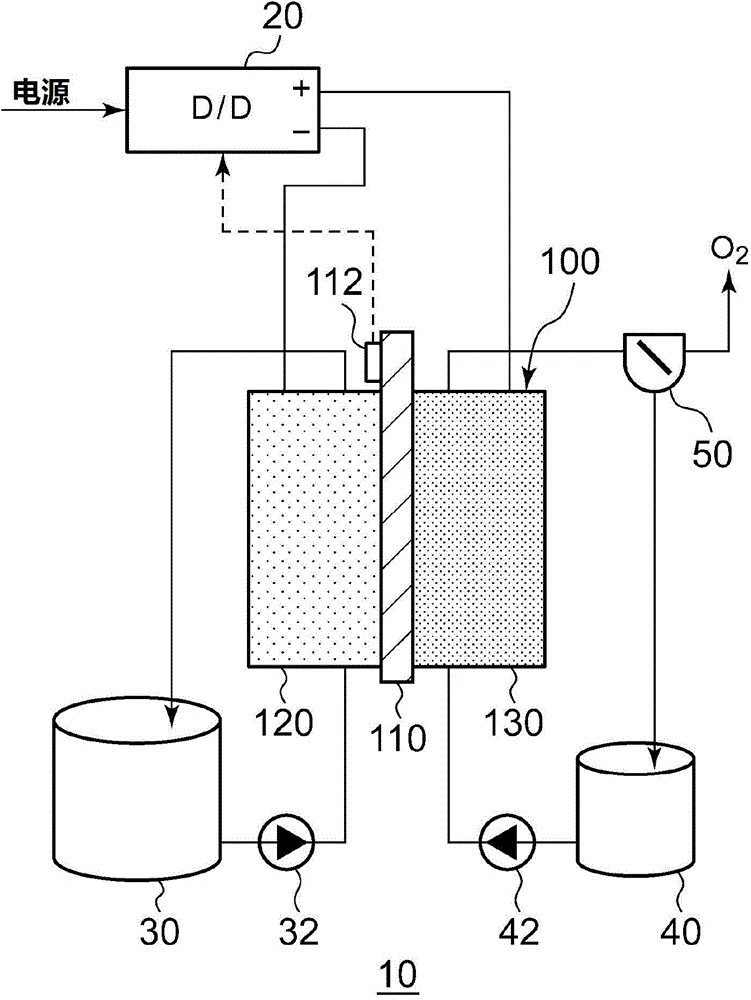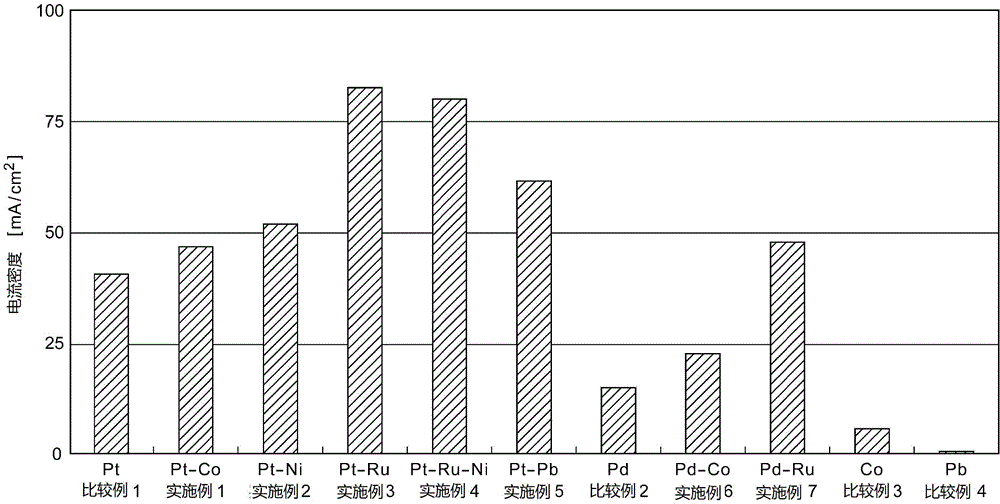Electrochemical reduction device and method for manufacturing hydride of aromatic hydrocarbon compound or n-containing heterocyclic aromatic compound
A technology of aromatic hydrocarbon compounds and aromatic compounds, applied in the field of electrochemical hydrogenation devices, can solve the problems of low conductivity and low affinity
- Summary
- Abstract
- Description
- Claims
- Application Information
AI Technical Summary
Problems solved by technology
Method used
Image
Examples
Embodiment Construction
[0026] Embodiments of the present invention will be described below with reference to the drawings. It should be noted that, in all the drawings, the same reference numerals are attached to the same structural elements, and explanations thereof are appropriately omitted.
[0027] figure 1 is a schematic diagram showing a schematic configuration of an electrochemical reduction device according to an embodiment. figure 2 is a diagram showing a schematic configuration of an electrolytic cell included in the electrochemical reduction device according to the embodiment. like figure 1 As shown, the electrochemical reduction device 10 includes an electrolytic cell 100 , an electrical control unit 20 , an organic matter storage tank 30 , a water storage tank 40 , and a gas-water separation unit 50 .
[0028] The electrical control unit 20 is, for example, a DC / DC converter that converts an output voltage of a power supply into a predetermined voltage. The positive electrode outpu...
PUM
| Property | Measurement | Unit |
|---|---|---|
| thickness | aaaaa | aaaaa |
| specific surface area | aaaaa | aaaaa |
| specific surface area | aaaaa | aaaaa |
Abstract
Description
Claims
Application Information
 Login to View More
Login to View More - Generate Ideas
- Intellectual Property
- Life Sciences
- Materials
- Tech Scout
- Unparalleled Data Quality
- Higher Quality Content
- 60% Fewer Hallucinations
Browse by: Latest US Patents, China's latest patents, Technical Efficacy Thesaurus, Application Domain, Technology Topic, Popular Technical Reports.
© 2025 PatSnap. All rights reserved.Legal|Privacy policy|Modern Slavery Act Transparency Statement|Sitemap|About US| Contact US: help@patsnap.com



